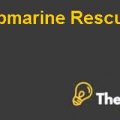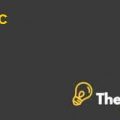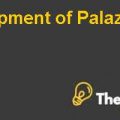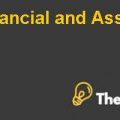Statement of Problem
Susan Collins is concerned about the 10% decline in its share price; meanwhile, the management is in a dilemma where they have to decide whether it is an ideal time to repurchase its equity share and to introduce debt on their balance sheet with existing line of credit.
Analysis of Alternative Solutions
However, California Pizza Kitchen is 100% equity financed company and it has previously avoided the use of debt financing when it launched its IPO, but now it again needs to finance the expansion of CPK for which it needed to either raise additional equity or through the debt financing.Meanwhile, the share price of CPK is already under pressure and has recently declined by 10%, therefore, raising finance through equity issue is not a suitable source of financing. Further, the more suitable strategy in order to finance its growth CPK can raise debt and in order to finance its growth, additionally, the current capital structure can also be changed by reducing the equity portion through own share repurchase.
However, Susan still has to decide about the appropriate capital structure that would increase the profitability and share price. Since the debt is a cheaper source of finance and Susan would be able to increase CPK’s earnings per share through introducing the debt onto the balance sheet.(Advani, 2006) Further, the debt is considered to be cheaper than equity because of the tax shield provided the prime(SUROWIECKI, 2009).
By the interest payments and will increase the earnings attributable to equity holders, meanwhile, the repurchase of equity shares will also reduce the number of outstanding shares, hence, the earnings per share will increase. In addition to the increase in earnings per share the return on equity will also increase because the share repurchase will reduce the outstanding share and increase earnings will be spread over the reduced equity shares.
Susan has three alternatives through which the growth of CPK can be financed and shares can be repurchased, will require different level of debt to equity ratio to be maintained on the balance sheet of CPK.
Alternative Course of Action
10% Debt to Equity
Under this alternative CPK will raise a certain amount of debt and then using that debt CPK will repurchase its shares from the market at the prevailing share price, however, the mechanism would be such that it will bring the debt to equity ratio of CPK equal to 10%. Further, the decision to raise debt to equity ratio to 10% will have a wide ranging effect on different variable such as the current beta value which is un-geared will have to be geared with the new debt to equity ratio of 10% which will increase the beta, and hence, the risk of equity investors. However, the 10% debt to equity ratio will increase the beta value to 0.91, meanwhile; the cost of equity will also increase to 7.19%. Additionally, the weighted average cost of capital will be will reduce to 6.88%, however, the reduction in weighted average cost of capital is because of the cheaper source of finance introduced on the balance sheet and repurchase of own equity shares.
Additionally, the debt to equity ratio of 10% will also increase the return on equity partly because of the cheaper source of finance used and partly because of the repurchase of own equity shares. Further, the earnings per share will also reduce the margins, but the price to earnings ratio will increase to 32.47 times due to the increase in the market price of CPK which will increase to $22.36 per share.
20% Debt to Equity
Alternatively, the debt to equity ratio can be changed from 10% to 20%, which will increase the interest cost commitment to $2783. Further, the additional debt will be used to repay the loan, meanwhile, the changing capital structure will also affect the beta values which will increase the cost of equity capital and on the other hand the debt, which is at a cheaper cost will get a higher weight-age of 20%, hence, the weighted average cost of capital will reduce to 6.68%. Additionally, the return on equity will also increase to 10.19%, but the earnings per share will decline to $0.69 per share. However, the market hare price of CPK will improve to $22.64 per share, which will lead to increased price to earnings ratio 33.29 times.
30% Debt to Equity
Meanwhile, the third alternative for the restructuringof CPK capital is to increase the debt to equity ratio of 30%, which will require an interest payment of $4,174, hence,will reduce total weighted average cost of capital. Moreover, the earnings per share will also reduce $0.67 per share and the equity investment will increase the cost of capital being used in the system. Meanwhile, the weighted average cost of capital of will also declines due to the equity portion replaced by the debt and will be 6.45% in the case of debt to equity ratio of 30% and the price to earnings ratio will be at its highest level of 34.21 times and the share price will also improve..................................
This is just a sample partial case solution. Please place the order on the website to order your own originally done case solution.














